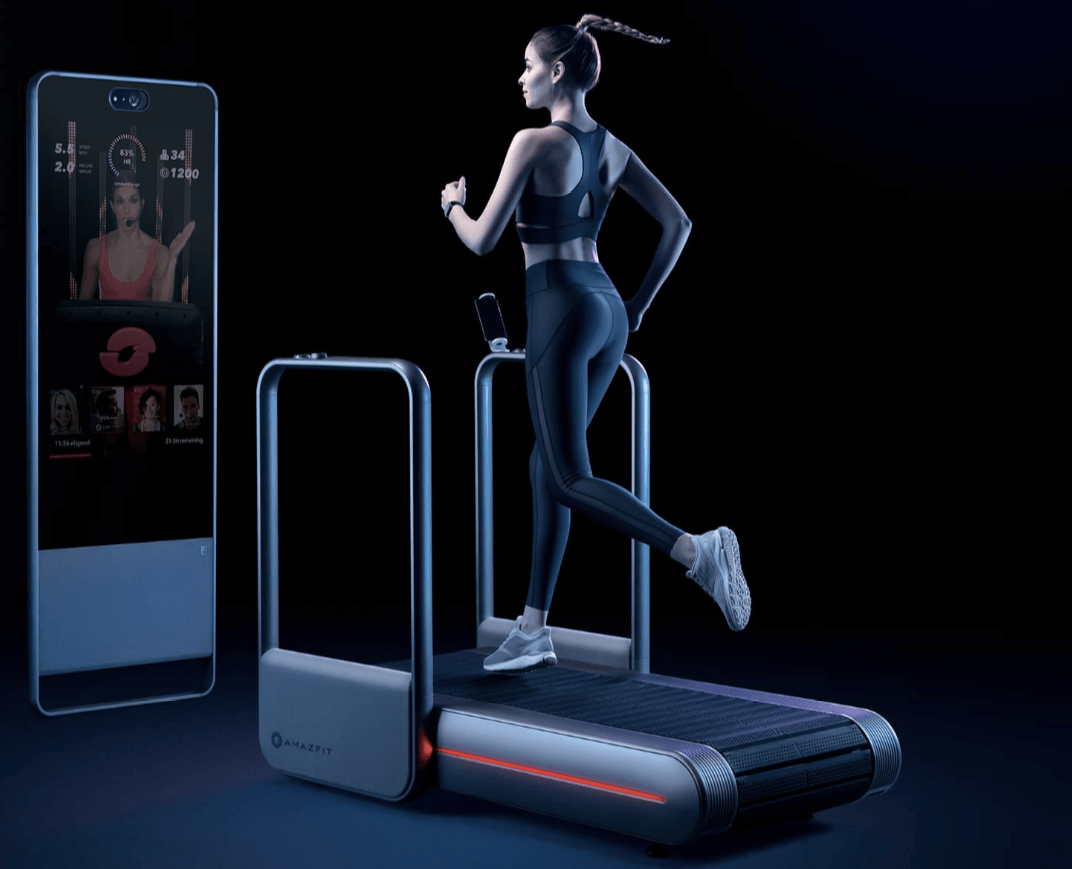More and more people all over the world are accepting self-imposed isolation to fight the spread of COVID-19. This is one of the most helpful steps to ease the pandemic, not to mention the role of technologies against the coronavirus. But as we spend more time in-house, the less active we become, which leads to negative effects on cardiorespiratory and muscular fitness, bone and cardio-metabolic health, and weight. To solve these problems without the risk of facing the virus, indoor fitness might be the perfect solution for you right now!
The advanced fitness technology we have now will allow you to analyze every aspect of your workout performance and your body, allowing you to stabilize your strengths and improve upon your weaknesses. It can be a pain trying to keep up with your fitness goals, especially when you factor in optimizing aspects like hydration, heart rate, calorie intake, and other data to help you complete your objectives.
Smart fitness gadgets will help you crush your goals, maintain your health, and achieve your desired level of athleticism.
To start with

First of all, you’ll need to set up an atmosphere that helps you work out somewhere in your home. From clearing out your couch, moving a coffee table, lighting a candle, getting the music bumping — whatever your vibe is, you’ll need to change the scenery from your working spot, even if it’s just another room.
Okay, now that you have found your place and you are ready, it is time to pick yourself the best gadget that fits your fitness goals, your character, and your wallet.
Fitness apps

Let’s begin with non-gear at-home fitness apps, which will cost you around nothing for a subscription and will require only a phone and an outfit you are comfortable in.
Aaptiv app offers audio-based fitness programs. As we are looking for gearless experiences, you should go for wellness programs — they don’t require any equipment and are geared toward meditation, bodyweight exercises, and sleep improvement. Some of its classes are now curated in free podcasts.
Daily Burn is a service that offers virtual fitness classes for high training intensity workouts, barre, cardio, strength, yoga, and more. You can use it for group or solo training. The service provides many classes without any gear needed as well as ones with it — it’s totally up for you to choose. And one more lovely point — you can get a 60-day free trial.
Virtual fitness programs from fitness guru Tracy Anderson, the Online Studio, offers new weekly classes for beginner, intermediate, and advanced fitness levels, a dance cardio library, muscular structure workouts, and more.
(For the most attentive: you can use your buddy who will replace almost any exercise machine. But we suggest you’d rather not.)
Smart fitness gadgets

Back to those kid times, jump-roping was fun, now it’s a great workout. The Tangram Smartrope makes it even more enjoyable by doing the counting for you, both in-air and in-app. After your workout, the Smartrope syncs your data to a smartphone for easy fitness tracking. Also available in rookie or pure versions with slightly different features, such as an adjustable rope and longer battery life.

The JaxJox KettlebellConnect can help you save time, space, and health with an in-home workout. This smart kettlebell is six weights in just one and fully covers your need for a quick, effective, full-body workout. The weight can be changed between 12 and 42 pounds in seconds, making it easy to switch from kettlebell swings to deadlifts. The kettlebell holds a charge for 14 hours, connects up to nine users, and syncs all data to an app. The app tracks reps, sets, weight, and rest time so you can track progress and get those gains.
Fitness training is more than just rep after rep or running miles — rehabbing is also critically important.
And here we have two smart tools to make your rehabilitation more productive — Smart Cuffs and PowerDot 2.0 Muscle Stimulator.

Debuted at CES 2020, the Smart Cuffs is a personalized blood flow restriction pump designed to promote muscle growth, minimize the loss of muscle mass, and build strength.
The company claims that blood flow restriction stimulates muscle growth without putting stress on joints since it is practiced primarily with low-intensity resistance training.
For newbies, the Smart Cuffs feature built-in safety mechanisms to assure they’re never used improperly. This means that if the cuff’s pressure goes above recommended, it automatically shuts off and releases. Smart Tools also offers its own certification courses to promote the safe use of the product and basic knowledge.

The Powerdot is a smart muscle and recovery performance tool that will keep you feeling your best. The device connects to a smartphone app that controls 10 electric muscle stimulation programs. The technology is designed to help you recover faster, massage out knots, avoid training fatigue, increase muscle strength, prevent injury, and more.
Smart workout systems for home

On top of indoor workout-systems, that can totally replace gyms for you, goes Peloton, the high-tech fitness company, with its smart bike and treadmill.
The bike costs $2,000 and the treadmill — $3,995 and each could be paid in installments from $39/mo. Both devices have similar HD touchscreens that stream thousands of live and on-demand classes that users can join from home. They also show real-time metrics: class progress, heart rate, resistance, cadence, output, etc. You can also ride face-to-face with your personal trainer thanks to the screen.
But to use these machines to their fullest, you’ll need a subscription for the workout classes. It costs $39 a month, which includes high-intensity boot-camp routines, running drills, mat work, and a lot more. If you already own a Peloton bike, you can stream classes for both machines via one subscription.
The company recently has changed the way it delivers bikes. Now it brings the equipment to the threshold of a customer’s home rather than inside to limit unnecessary contact.
But the company is unable to offer the same service for the Tread because of the size and weight, so it’s temporarily suspending deliveries for now.

The second name in the category will be a New York-based startup Mirror with its LCD mirror that allows customers to stream live and on-demand fitness classes from their homes. It looks just like a fancy mirror and costs quite fancy too — $1,500 or $42/mo for 36 months.
The process begins on the app: new customers are asked to enter their weight, height, fitness goals, and details of any injuries.
There are over 70 live classes added to the app each week including cardio, boxing, strength training, yoga, barre, Pilates, boxing, HIIT, and more. All levels range from beginner to expert. Customers have to buy a 12-month subscription to these classes, which cost $39 per month and is paid separately from the mirror itself.
Those who want a truly personalized experience can go for personal-training sessions using the mirror’s built-in camera and microphone. Each session costs $40.
To track the heart rate, users need to connect a Bluetooth heart rate monitor that goes with the mirror. It is worn around the waist and tracks your heart rate throughout the workout, as well as how many calories you have burned. But it is also possible to connect an Apple Watch.
If you have noted that you have, for example, a leg injury, a smaller image of the instructor doing an alternative exercise pops-up on the screen, suggesting a less intense version of an exercise. This personalization is what distinguishes the system from competitors.
The company also took some precautions about the delivery of the Mirrors as well.

And last but not least is going to be an Amazfit, a self-brand of Huami, with its highly anticipated Amazfit HomeStudio.
The system looks like a mashup of the systems mentioned above and was claimed as one of the most potential products during CES 2020.
The system comes in two varieties: a slat belt treadmill of 12 mph speed or a compact and foldable version with 9 mph. Both models come with a 43-inch HD display called the Smart Gym Hub, but the display itself is named Glass. It gives access to a variety of workout classes: from running to yoga, sculpting, stretching routines, and others.
Having the treadmill and the mirror as separate parts seems quite useful since you can use the treadmill aspect for a workout or stand in front of the display unhindered doing some fitness workouts. So, for now, it really does seem like a real mashup of the Mirror and Peloton.
But the real icing on the HomeStudio package cake is a 3D scanner built into the display. It recognizes your postures and guides you to correct any problems in your form, helping with better workouts and reducing injury risks.
Honorable mention
Back in 2019, at the Web Summit, we’ve met a very promising Hong Kong-based startup RaceFit that specializes in motion detection and IoT smart wearables.
They’ve developed a RaceFit COR, an all-in-one, waterproof motion detection module that can capture your movement at up to 48,000 readings per minute.
When you wear these modules and perform some workouts, trainers from other parts of the globe can see your precise movements and guide you to better your performance and cut injury risks. Back at the Web Summit, the company showed a use case for its technology in fencing, a very exacting and delicate sport. Due to COR’s precise tracking, trainers could see the whole performance of trainees as if they’ve stood face-to-face.
The technology has various implementations from sports training to taking care of the elderly. We’ll surely keep an eye on the company and suggest you do the same.

To track and analyze sportsmen’s movements, their overall performance, and enhance training, a Computer Vision-based tool might be of great help.
We’ve embraced the existing estimation methodologies, formulas, rates, parameters, furnished it with cutting-edge Computer Vision algorithms and developed Sports Analytics Software. The system recognizes sportsmen on a video and estimates their performance via specified measurements: size, player’s position, body movements, required angles, twists, and many others.
Our software is very helpful for both trainers and sportsmen since it helps to spot out weak moments and provides data for exact future improvements.
Stay in shape

As you can see there are a lot of tools nowadays to enhance your fitness training, especially for the current situation. You only need to pull yourself together, decide which solution is best for you and start using it now. The pandemic might last even months more and it is vital to stay indoors and in shape, so after it’s over you’ll still be healthy and awesome.
We’ve said it before, but again — keep calm, wash your hands and avoid crowded places. Follow the instructions provided by your local authorities and stay home — as you can see, you can totally replace the need for a gym.
We are always eager to share our own and world’s best practices and are wide open to learn something new, so if you have any questions or ideas — feel free to write to us. Let’s develop the world together!









